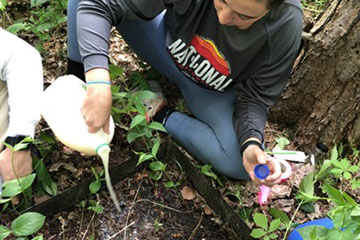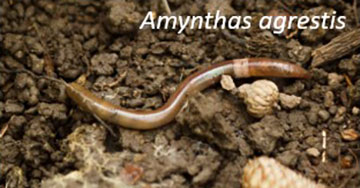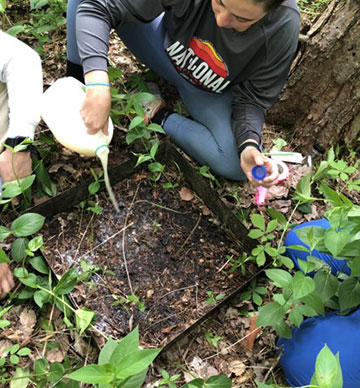
01/30/2024
SUNY Cortland was selected for a $98,630 New York state grant that will fund research into invasive worm species that are altering soil ecosystems. The funds will not only provide new educational opportunities at the university but give faculty and students updated equipment that will benefit the Biological Sciences Department for years to come.
Laura Eierman and Andrea Dávalos, both associate professors in the Biological Sciences Department, and Annise Dobson a postdoctoral researcher at Yale University led the initiative. They expect the award will enhance students’ education at Cortland by making new undergraduate research opportunities available and improve their prospects after graduation by giving them experience in both field ecology and with molecular genetic techniques.
"They're going to be getting a really nice full holistic set of these tools that could be used to assess conservation questions,” Eierman said.

The award, made through the New York State Department of Environmental Conservation’s Invasive Species Grant Program, is part of a wider 43-project effort by the state to reduce the impact of invasive species on natural resources, economy, and communities and one of only four research-based grants funded.
SUNY Cortland did similar grand-funded research from 2019 to 2023, which allowed 10 undergraduate students to help in the study of three species of Asian jumping worm that have spread across the globe — including much of North America.
Students involved in this project completed their honors thesis and presented their work at student research conference Transformations and in national and international conferences. In addition, four students supported by the Louis Stokes Alliances for Minority Participation (LSAMP) grant completed work on the project during their summer internship.
The problem with the worms, according to Dávalos, is that worms deplete the leaf litter and change the soil structure and chemical composition. This results in negative impacts on soil fauna, including salamanders and ground-nesting birds. Jumping worms change the soil to a composition similar to coffee grounds that makes plants’ roots become more exposed to cold and more vulnerable to water deficits, while also reducing plants’ access to required nutrients.
“Originally from Asia, they have spread all through the world. There are some that have been found on islands and tropical locations. You can find them in the Galapagos Islands, Brazil and throughout North America” Dávalos said. “So, they are a really successful group.”
Although the worms are found throughout North America, it’s unknown how evenly they’re spread across different areas and ecosystems. The research to be done by SUNY Cortland will add to the understanding of where the worm species are most common and how best to control or reduce the population.

“It's a project that's really accessible to students and, I'll speak from the genetic side of things, the skills that they're building are a really fundamental skillset for molecular biology,” Eierman said. “It's really student friendly.”
New to the school’s work in this field will be genetic analysis equipment that makes the needed research faster and more efficient. The team plans to purchase a portable high-throughput sequencing device that allows for quick and efficient sequencing of DNA at a genomic scale rather than older technology that sequences one gene per specimen at a time. Currently, the college does not have any sequencing technology on campus.
“You can sequence a whole genome or, in this case, take a soil sample and do some preparation with that soil sample, tagging every single different piece of DNA in it and separate the pieces out and read each one,” Eierman said, explaining how the data could be used to identify different animals. “Then you can match sequences against existing databases ... and you can do this metagenomic analysis and ask, ‘Who's in my soil?’”
This process has been streamlined in the past decade to the point where the technology is more readily available, giving Cortland access to a tool and that will not only aid in future research projects, but give students aspiring to a career in science a taste of technology found in professional labs.
“The students do get to unique resources and they interact with researchers across partner organizations,” Dávalos said. “They get support as they think about the new steps in their career.”